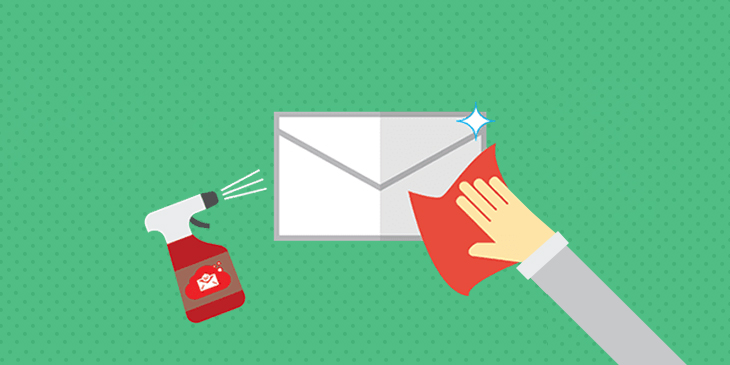The Real Value Of Email Hygiene

Email is not extinct; on the contrary, its value increases year after year. Email speed, personalization, customization, and targeting are being used and relied upon by marketers more and more every day. Creating and managing email campaigns, however, takes time if you want them to be successful. No matter how big or little your business is, the resources you’ve invested — and the money you’ve spent — need a good return. And email marketing is under a lot of stress because of that.
How much of a return on investment (ROI) can they expect from cleaning up their email information?
Others may argue that if something isn’t broken, why repair it? However, most experienced marketers who are aware of the time and work required to execute an effective email campaign are contemplating, “There’s no way I can afford to wait until something goes wrong before I start fixing it. What are my options for companionship? “What are you talking about, anyway? Whatever side of the debate you’re on, this piece was created with you in mind. To assist you in preventing difficulties that might turn your investments into nightmares, we’ll go through the benefits of implementing Email Hygiene and Email Validation early on.
How to do a quick cleaning
Information about your subscribers should be as accurate as possible since this information may be both useless and even harmful if not up-to-date. Make sure the information you have about your subscribers is up to date.
- Bounce data should be removed since it’s a waste of time to transmit to addresses that bounce back. Keep an eye out for bounced emails and delete any that are spam.
- If anybody unsubscribes from your email list and you keep sending them emails, your reputation will be harmed. A legal duty under CAN-SPAM and the new GDPR standards is to respond swiftly to opt-out requests as part of cleansing your email lists.
- If you get any new leads or contacts, make sure they are a good match for your company before adding them to a list; in order to get the best results, double-check that the lead was added to the right list and inputted accurately.
- Allow your receivers to choose whether or not they want to receive your emails: This is now a legal duty because of the new GDPR regulations. You’ll have a more engaged audience if you have the authorization to send your material to them.
- Cold email addresses should be deleted from your list and selected for a re-engagement campaign if they haven’t experienced any activity like opens or clicks in the last period of time (e.g., a year).
- Make use of an internet resource: It takes a long time and effort to tidy up a big list. Online programs and tools are abundant for fast decluttering your to-do lists.
Validation Alone Isn’t Enough.
To begin, keep in mind that Verification’s Oath’s choice to disable confirmation for Yahoo, Verizon, AOL, and other email services they hold has a significant impact on the capacity of Verification to identify bounces. In order to mislead prospective consumers, several verification services are now adopting the phrase “validation.” However, don’t be deceived. Verification, validation, or whatever name you choose to give it, is still insufficient to deal with the sheer volume of email threats you must contend with.
That was a lot of advertising stuff; you’re probably thinking. Even if I accept all of that, why do I have to go to the trouble of adding myself to my own list? Without a doubt, there is no danger in not doing so. Even if it’s worth it, is it really worth it? Let’s strive to reduce the use of marketing jargon and get down to the nitty-gritty. Add some very current third-party research to back it up. That seems okay, right?
How much money can you expect to make with Multi-Method Email Verification and Hygiene?
Email marketers that used a variety of email hygiene and validation techniques outperformed those who did not. The delivery, open, click, and conversion rates were all the better for those who used multi-method email hygiene and Verification, and the AOV (Average Order Value) was 3.9% higher as well.
What’s Wrong
Researchers observed that when asking marketers whether they used Verification and hygiene procedures in a report, the majority didn’t, and some hadn’t planned to. Overall deliverability rates have been moving to decrease over the previous three years, with the second half of 2018 seeing a reduction to 87%, according to the research.
Deliverability rates are so low because inbox providers, both for consumers and businesses, are swamped by the volume of spam that floods their systems every day. The filters used to safeguard receivers frequently result in false positives, even when these providers have their own methods of recognizing fraudulent assaults. End users, who depend on and expect to get their emails, were left without them since good communications were either banned, put to the bulk folder, or quarantined.
The Answer
Verification and cleanliness should always be used together to assist increase deliverability rates. The outcomes are self-evident. Verification is a critical step in ensuring the validity of your email addresses, but it falls short of providing full protection.
The Final Result
The Relevancy Group conducted a study in June 2018 and found that individuals who used Verification, as well as cleanliness, fared better than those who did not. Marketers that employ this strategy have a 38% greater monthly email marketing income than those who don’t. This translated to an extra $2 million in earnings per month for the study’s participants. Email hygiene turns out to be a profit center rather than a cost one.
Aside from the better delivery, click, and conversions rates, marketers will also see an increase in the average order value (AOV) of their emails, as previously stated.
As of June 2018, the following companies are using this strategy:
- Are receiving more from the bigger send: Those that used this strategy sent more often. Verification and cleanliness both give a better quality audience and conclude with a pleasant delivery and interaction may mail more often than ever before. Verification
- An increase in the Deliverability Rate of 1.27 percent was seen among those who used this strategy instead of others.
- Improved Engagement: Open and click-through rates were on average one and a quarter to one and three-quarters higher for senders with a data quality mentality.
The AOV Increased: Those that embraced data quality had an AOV increase of $3,9 percent, to $137.21, on average.








